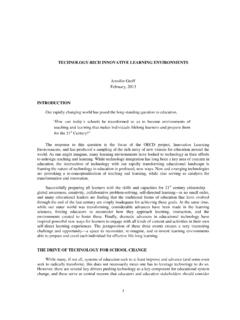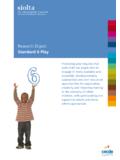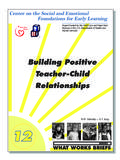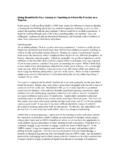Transcription of Characteristics of Adult Learners with Implications …
1 Cercone, K. (2008). Characteristics of Adult Learners with Implications foronline learning design, AACE Journal, 16(2), of Adult Learners with Implications forOnline learning DesignKATHLEEN CERCONES tate of ConnecticutMilford, CT online educational environment is increasingly beingused by adults and should be designed based on the needs ofadult Learners . This article discusses andragogy, an importantadult learning theory, and reviews three other Adult learningtheories: self-directed learning , experiential learning , andtransformational learning . During this discussion, thetheories are examined for the ways in which they may beapplied to the design of online learning environments. Inaddition, the Characteristics of Adult Learners are examined,and an analysis of how these Characteristics influence thedesign of an online learning environment is follow regarding how to design an onlineclassroom environment while considering the application ofadult learning Adult learner and the manner in which he or she learns best have beenquestioned and researched since the 1920s, when Adult education became aprofessional field of practice (Merriam, 2001).
2 Today, several theories andmodels attempt to explain Adult learning . One of the most well knowntheories is Malcolm S. Knowles learning theory of andragogy, the art andscience of helping adults learn. Andragogy is a learning theory that isdesigned to address the particular needs of adults , and it is based on the ideathat there are significant differences in learning Characteristics betweenchildren and adults (Knowles, 1980).138 Association for the Advancement of Computing In Education Journal, 16(2)This article presents a framework for integrating Adult learning theories withrecommendations for designing an online environment to meet the needs ofadult students. This article introduces the Characteristics of Adult this discussion, the concept of andragogy is presented. Thispresentation will provide not only andragogy s strengths, but also itsweaknesses and limitations. Due to these limitations, the author will presentan overview of three other important Adult learning theories- self-directedlearning, experiential learning , and transformational learning .
3 These theoriesprovide information that may help the instructor or instructional designer increating an online or distance learning program for adults . Considering boththe Characteristics of adults and Adult learning theories, recommendationsthat synthesize this information will be made regarding how to design anonline environment that will best meet the needs of Adult learning THEORIEST oday, most adults conceptualize learning as an instructor-designed andinstructor-led endeavor that occurs in classrooms where students sit to learnfrom the "sage on the stage." This is the model with which most adults grewup (Tweedell, 2000). However, many adults want to take advantage ofonline learning environments, primarily due to their busy schedules and theonline format s convenience. They are using technology with different setsof expectations that are based on their personal histories (Tweedell).Instructors need to be aware of what adults want and need.
4 learning theoriesand models, such as andragogy, are important for instructors to understandas they work with adults in an online or distance learning (2004) completed a study that supported the view that Learners withdifferent Characteristics may not only prefer, but benefit, from differentinstructional features and goals. The next section of this article reviewsimportant Characteristics of adults that should be considered when designingan online learning of Adult LearnersMost adults were taught in a traditional and passive classroom. Onlinelearning environments are also new to instructors, who have to learn new139 Association for the Advancement of Computing In Education Journal, 16(2)methods for teaching in this kind of setting. Learners and instructors bothneed to adapt and change as they learn how to use this new , instructors, instructional designers, and other professionalsworking in the design of online environments for adults must understandadult learning theory, especially in terms of its relationship to distance oronline learning .
5 According to Moore and Kearsley (1996), "most distanceeducation students are adults between the ages of 25 and 50. Consequentlythe more one understands the nature of Adult learning , the better one canunderstand the nature of distance learning " (p. 153).More distance learning programs are being developed annually; therefore,increasing numbers of Adult Learners will be tapping into this new resourcefor education. According to the U. S. National Center for EducationStatistics (2002), 56% of all 2- and 4-year degree-granting institutions offerdistance education courses for all types of students. The Sloan Consortium'sfourth annual report (2006) on the state of online education in highereducation reported: (a) almost two-thirds of all schools offering face-to-facecourses also offer online courses, (b) the growth rate of online enrollmentbetween 2004 and 2005 was 35%. The year 2004-2005 demonstrated thelargest increase in the number of online students as well as the largestpercentage increase in online enrollment growth (Allen & Seaman, 2006).
6 Adult Learners are different from traditional college students. Many adultlearners have responsibilities ( , families and jobs) and situations ( ,transportation, childcare, domestic violence and the need to earn an income)that can interfere with the learning process. Most adults enter educationalprograms voluntarily and manage their classes around work and familyresponsibilities. Additionally, most Adult Learners are highly motivated andtask-oriented (Merriam & Caffarella, 1999). adults have many challenges today, such as multiple careers, fewer stablesocial structures to rely on, living longer, and dealing with aging past is less helpful as a guide for living in the present. adults areinsecure in many decisions that they need to make. Life is complex due tocareer, family, and other personal changes take place as individuals age, and it has been shown thatmemory decreases with age. It is memory that helps to form links betweennew and old information (Merriam & Caffarella, 1999).
7 Short-term memoryor working memory is limited to approximately five to nine bits of new140 Association for the Advancement of Computing In Education Journal, 16(2)information at a time (Clark, 1999). The ability to perform chunking, or thegrouping of associated concepts, is important for all students (Clark). Table1 provides a summary of recommendations regarding the biological changesthat may necessitate adaptations to the online learning 1 Recommendations for Online Course Development based on Characteristicsof Adult LearnersCharacteristicRecommendations1. adults may havea. Maintain large, easy to read fonts and clear, boldsome limitations should beb. Use variety of graphics, images, and in the designc. Ensure compliance with Americans withDisabili-of the onlineties Act and Federal 508 Use a clear menu Use a search and find Provide practice with feedback and self Provide record keeping among Provide frequent entry and exit Be consistent if using a Provide a context sensitive help Distinguish between temporary vs.
8 Permanenttermination of the Ensure there is no cultural Use graphic organizers, Venn diagrams, conceptmaps, and Chunk information into 5-9 bits of styles are also important to consider, in that they determine howindividuals approach learning tasks. There are many definitions of learningstyle. According to Felder (1996), " learning styles are characteristicstrengths and preferences in the way [ Learners ] take in and process informa-tion" ( 1). Silver, Strong, and Perini (1997) explained that learning stylesrelate to the different ways people think and feel as they solve problems,create products, and style research is a complex field that has seen the growth of manymodels and numerous learning style inventories/tools. The field has devel-oped in response to the desire of researchers and educators to know howstudents learn most efficiently. Lifelong learning may be enhanced ifstudents are motivated to learn by understanding their learning style(Coffield, Moseley, Hall, & Ecclestone, 2004).
9 141 Association for the Advancement of Computing In Education Journal, 16(2)In their meta-analysis of 71 learning style inventories, Coffield et al. (2004)identified several problems common to learning style inventories: (a) lack ofa unified, common definition of learning style, (b) weakness in reliabilityand validity research, (c) the classification or grouping of individuals usingcategories or dichotomies, and (d) the commercial gain that authors havesought through the sale of their spite of these weaknesses, there are many reasons why educators shouldcontinue to use such tests. They can help students develop increased self-awareness, and they provide an opportunity for students and instructors toengage in a discussion that may not have taken place otherwise. These toolsfoster a learner-centered approach to teaching and encourage and Pratt (2003) reported that "underlying learning style research isthe belief that students learn best when they approach knowledge in waysthey In other words, a one size fits all approach will not work" ( ).
10 Table 2 presents recommendations on incorporating learning styles inan online learning the increasing number of Adult students, interest in how adults learncontinues to grow, and research continues in the area of Adult learningtheories. The next section of this article introduces learning theories withapplication to the Adult 2 learning Styles and the Characteristics of Adult Learners2. learning styles needa. Ensure that students can move throughto be instruction at their own any group of adultsb. Ensure that the students can reviewthere will be a wide rangeprevious learning whenever they individual differences,c. Provides links to a wide variety of webthus the learning experiencesd. Ensure to allow ample time for studentsis important in many master the Ensure that alllearning styles are addressed by presentingmaterial in multiple modes including text,graphics, audio and manipulativesf. Usestrategies such as consciousness raising,journal keeping, reflection logs, thinksheets, guided for the Advancement of Computing In Education Journal, 16(2) learning THEORIESGold (1999) and Reeves (1994) discussed the two major educationalphilosophies that have emerged in the last century.








